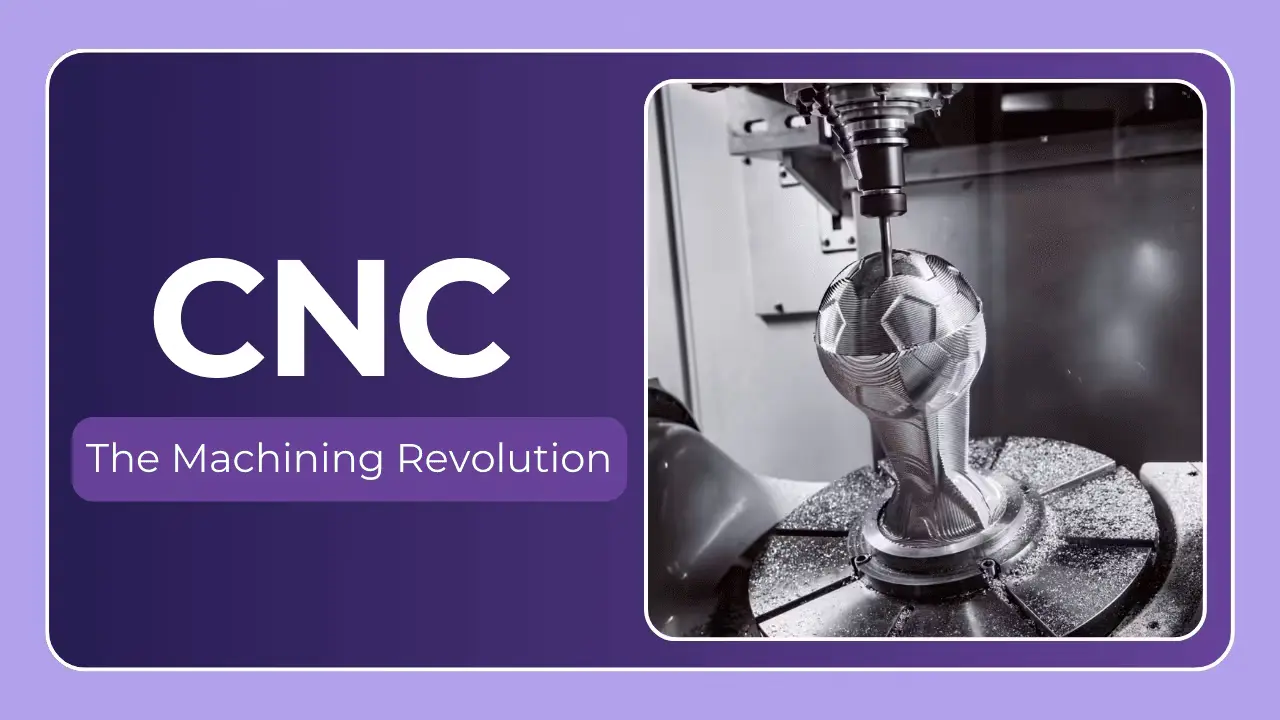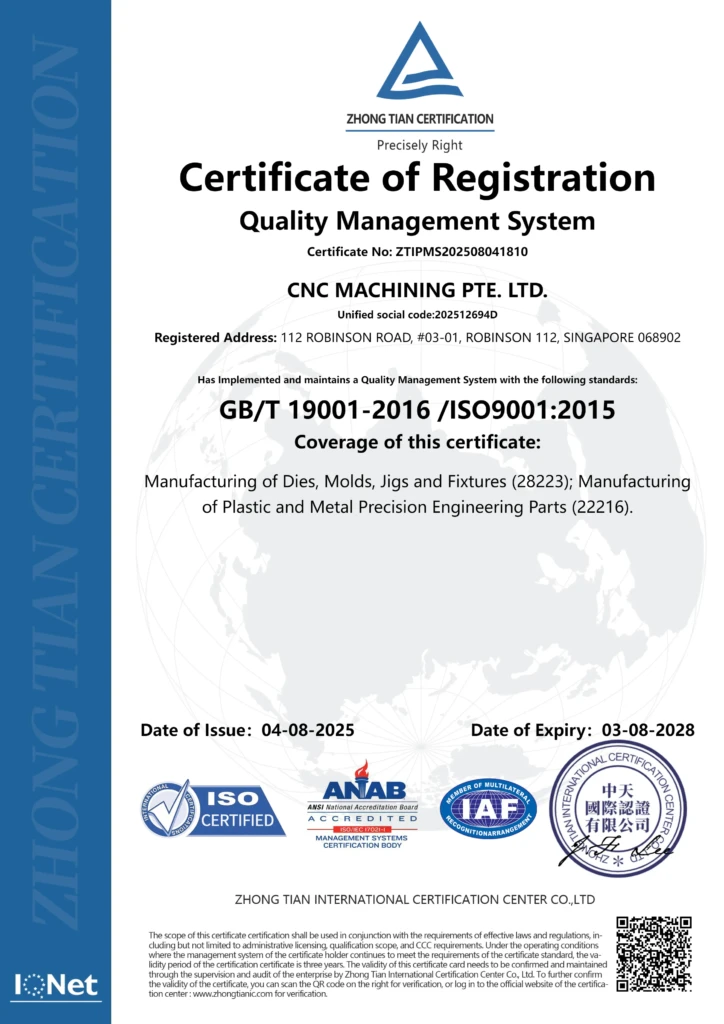Decoding Automated Precision: A Deep Dive into Auto CNC Machining Basics
In today’s manufacturing landscape, precision, speed, and repeatability are paramount. Automated CNC (Computer Numerical Control) machining has emerged as the cornerstone of achieving these goals, transforming how parts are made across countless industries – from aerospace and automotive to medical devices and electronics. But what exactly is auto CNC machining, and how does it differ from traditional methods? This article will break down the fundamentals, exploring the processes, advantages, materials, and key considerations for a successful CNC machining project. We’ll also touch upon the significant advancements made possible by multi-axis machining, particularly 5-axis capabilities, a specialty of providers like CNC MACHINING PTE. LTD. in Singapore.
From Manual to Machine: A Historical Perspective
For centuries, machining relied entirely on skilled craftspeople operating lathes, mills, and other tools manually. While producing incredibly intricate pieces, this method was inherently limited by human skill, fatigue, and the challenges of mass production. The advent of NC (Numerical Control) machining in the 1950s marked a revolution. NC machines used punched tapes to control tool movements based on pre-programmed instructions.
However, the real leap forward came with the development of Computer Numerical Control (CNC). CNC machines replaced punched tapes with computers, granting greater flexibility, accuracy, and the ability to handle complex geometries. Today, CNC machining isn’t simply a process; it’s an ecosystem of software, machines, and skilled professionals working in concert to realize designs with unparalleled precision.
The Core Components of an Auto CNC Machining System
Understanding the core components helps illustrate how the process works. Here’s a breakdown:
- The CNC Machine: This is the physical hardware, encompassing various types like mills, lathes, routers, grinders, and more. Each is suited for different types of geometries and materials.
- The Control System: The “brain” of the operation. This computer reads the G-code program and translates it into precise instructions for the machine’s motors and spindles. Modern control systems often feature sophisticated simulation and verification tools.
- CAD (Computer-Aided Design): The software used to create the 3D model of the desired part. Popular examples include SolidWorks, AutoCAD, and Fusion 360.
- CAM (Computer-Aided Manufacturing): The software used to translate the CAD design into G-code. CAM software considers toolpaths, cutting speeds, feed rates, and other parameters to optimize the machining process. Examples include Mastercam, GibbsCAM, and PowerMill.
- G-Code: The programming language that tells the CNC machine exactly what to do. It consists of a series of alphanumeric commands that dictate tool movement, speeds, and other operations.
Common CNC Machining Processes
Several distinct machining processes fall under the CNC umbrella. Here are some of the most prevalent:
| Process | Description | Typical Applications | Material Suitability |
|---|---|---|---|
| Milling | Removes material using a rotating multi-point cutting tool. Can create various shapes, slots, and contours. | Complex parts, molds, dies, prototypes. | Aluminum, steel, plastics, titanium |
| Turning | Rotates the workpiece while a single-point cutting tool removes material. Creates cylindrical shapes. | Shafts, screws, bushings, fittings. | Steel, brass, copper, plastics |
| Drilling | Creates holes in the workpiece. Can be combined with other processes. | Fasteners, assembly points, fluid channels. | All machinable materials |
| Grinding | Uses an abrasive wheel to finish surfaces and achieve tight tolerances. | Precision components, hardened materials. | Steel, ceramics, carbides |
| EDM (Electrical Discharge Machining) | Removes material using electrical sparks. Ideal for hard materials and intricate geometries. | Dies, molds, aerospace components. | Hardened steel, titanium, tungsten carbide |
The Rise of Multi-Axis Machining – Especially 5-Axis
Traditional 3-axis machining limits the operator to moving a tool in three linear directions (X, Y, and Z). While capable, this is restricted when dealing with highly complex geometries. Multi-axis machining expands this capability.
- 4-Axis machining adds a rotational axis, typically around the A axis.
- 5-Axis machining adds two rotational axes (typically A and B, or A and C).
This added flexibility allows for machining multiple sides of a part in a single setup, significantly reducing setup time, improving accuracy, and enabling the creation of incredibly intricate shapes. Providers like CNC MACHINING PTE. LTD. specialize in 5-axis CNC machining, providing significant benefits for projects with complex undercuts, angled holes, and organic shapes. 5-axis also minimizes the need for manual repositioning, reducing the risk of errors.
Materials Commonly Machined with CNC
CNC machining’s versatility extends to a wide range of materials. Here are a few common examples:
- Metals: Aluminum alloys, stainless steel, titanium, brass, copper, alloy steels.
- Plastics: ABS, Acrylic, Delrin, Nylon, Polycarbonate.
- Composites: Carbon fiber, fiberglass.
- Wood: For prototyping and specialized applications.
The choice of material often dictates the appropriate cutting tools, speeds, and feeds.
Key Considerations for a Successful CNC Machining Project
Before initiating a CNC machining project, consider these crucial factors:
- Design for Manufacturability (DFM): Optimize your design for efficient machining. Avoiding tight corners, deep cavities, and complex geometries can significantly reduce costs and improve accuracy.
- Material Selection: Consider the part’s intended function, mechanical properties, and environmental conditions.
- Tolerance Analysis: Specify realistic tolerances. Tighter tolerances increase machining time and cost.
- Surface Finish Requirements: Define the desired surface finish. Further post-processing may be required to achieve specific finishes.
- Part Quantity: Production volume impacts the optimal machining strategy and tooling choices.
- Prototyping: Create prototypes to validate the design and machining process before mass production.
- Post-processing: Services like anodizing, plating, painting, and polishing offered by companies like CNC MACHINING PTE. LTD. can complete the manufacturing process.
The Future of Auto CNC Machining
The field of CNC machining is constantly evolving. Emerging trends include:
- Additive Manufacturing Integration: Combining CNC machining with 3D printing to create hybrid parts.
- AI-Powered CAM Software: Artificial intelligence algorithms are being used to optimize toolpaths and improve machining efficiency.
- Digital Twins: Creating virtual replicas of CNC machines to simulate and optimize processes.
- Increased Automation: Robotic loading and unloading of parts to improve throughput and reduce labor costs.
Conclusion: Embracing Precision in a Demanding World
Auto CNC machining represents a fundamental shift in manufacturing, offering unparalleled precision, speed, and repeatability. Understanding the core principles, processes, and considerations outlined in this article is essential for anyone involved in product design, engineering, or manufacturing.
Whether you require simple prototypes or complex, high-volume production runs, leveraging a professional CNC machining service like CNC MACHINING PTE. LTD. in Singapore can unlock significant advantages. Their expertise in 5-axis machining, combined with commitment to quality and one-stop post-processing solutions, allows them to tackle the most challenging manufacturing problems.
For custom precision machining that delivers results, explore the possibilities with CNC MACHINING PTE. LTD. and customize your precision parts at the best price today. They aren’t just a manufacturer; they are a partner in bringing your innovations to life.




